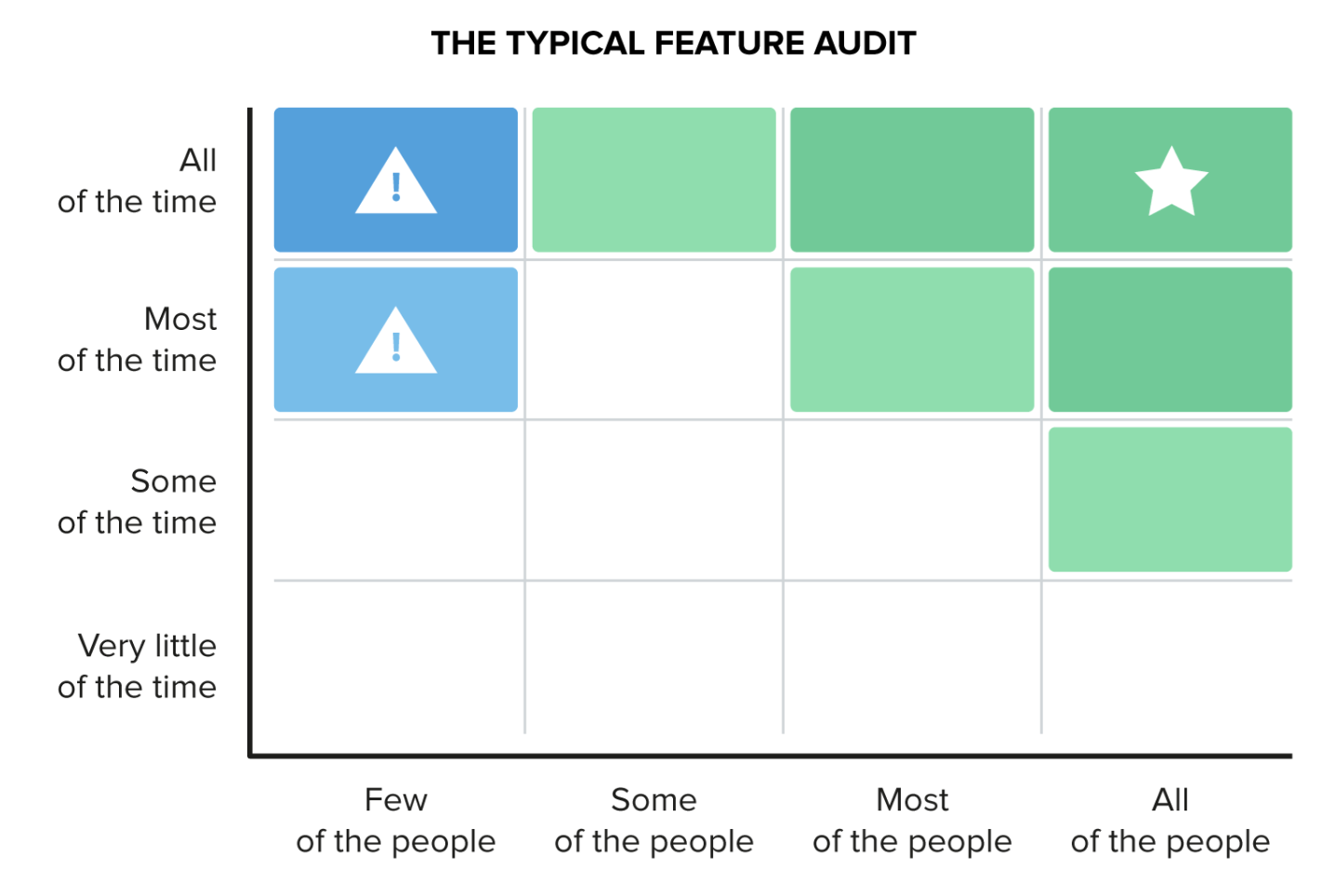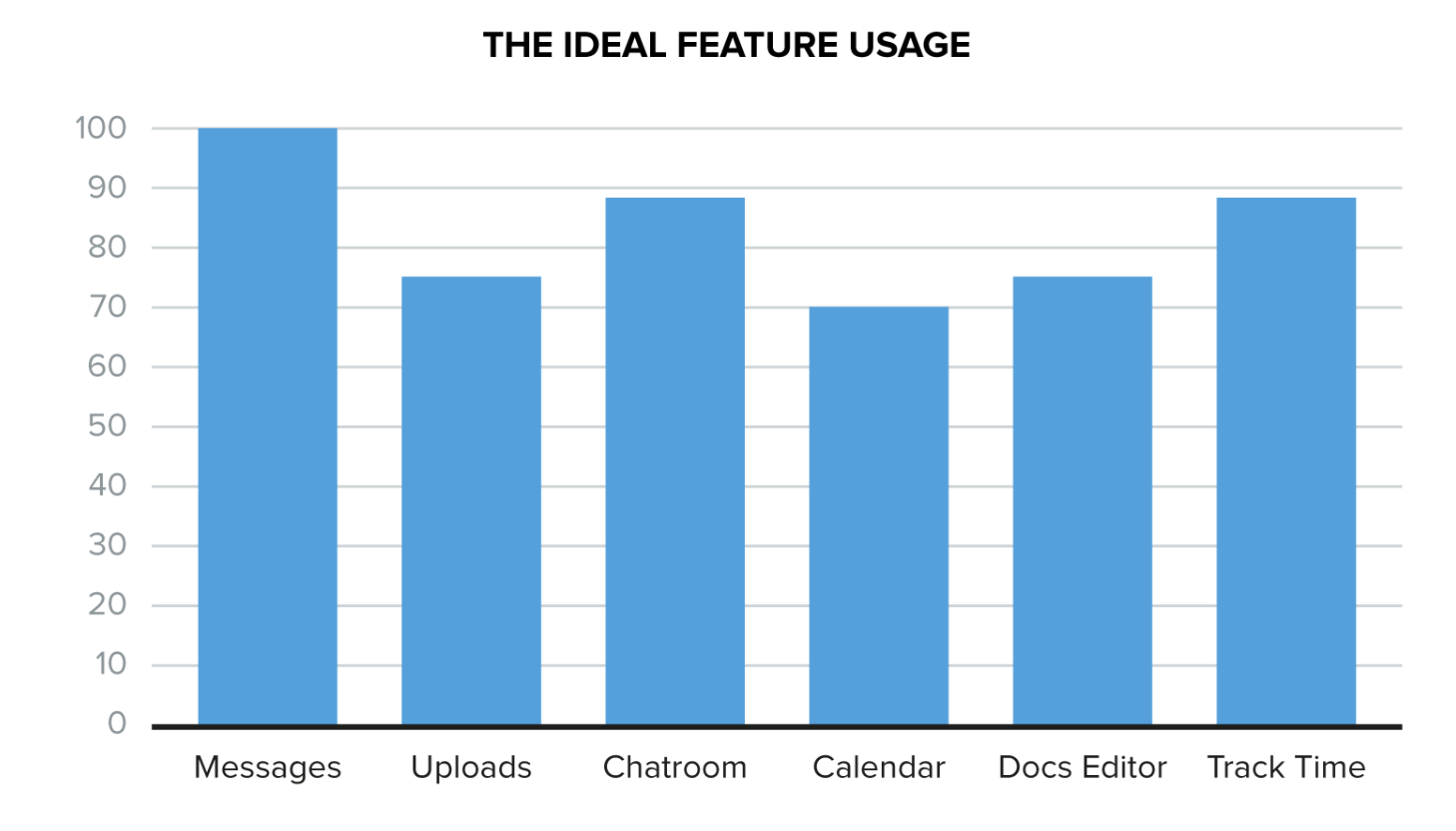Intercom on Product Management
These are the notes I took while reading Intercom’s eBook “Intercom on Product Management.”
Download link.
More notes I’ve taken while reading other books.
What are people actually doing in your product?
Are all your users using all the features in your product?
When figuring out what to build next, ask “how many people are actually using each of our product’s features?”

- Features in the top left is a sign of poor adoption. A few customers depend on this feature but most rarely touch it.
What percentage of users have adopted each feature?
The ideal feature usage:

What do you do with your feature audit?
You have four choices
- Kill the feature (and remove it from your product)
- Get more people to use the feature
- Get people to use the feature more often.
- Make the feature better for those who use it.
Adding New Features
New features are risky. They’re like children: you’ll have to support them no matter what.
Don’t ask users “would you like [Feature X]?” It’s a something for nothing offer. Of course they’re going say yes to a thing they don’t really want.
When figuring out where to improve. Ask
Where do we suck, and where does it matter?
Why you don’t add new features
Building a great product isn’t about creating tons of tactically useful features which are tangentially related. It’s about delivering a cohesive product within well-defined parameters.
- Scope or ease of implementation should never be a reason to include a feature in a product.
- Don’t be feature blackmailed by customers. No one customer is more important than a good product. This is the road to consulting-ware.
- Avoid death by preferences. It adds complexity and weakens your product definition.
But if we don’t build it someone else will
That doesn’t mean it should be in your product. If someone else builds it, do customers no longer need your product? Will they all switch over?
Focus on Outcomes
Focus on the outcome your product delivers, not the industry it’s in. For example, newspapers didn’t realize their ‘job to be done’ was boredom for commuters. In this instance, their competitors weren’t other newspapers. They were competing with Twitter, Facebook, and new apps.
How to do a better job
- Take out steps
- Make it possible for more people
- Make it possible in more situations
What to build?
- Will it still matter in five years?
- Will everyone benefit from it?
- Does it improve, complement or innovate your existing workflow?
- Can we do it well?
There is no single choice you’ll make where some light turns on saying “Your Product is Now Too Complex”, and you’ll never get an email saying “Last Thursday at 2:03pm Your Product was Disrupted”. Bloat, complexity, and disruption can only be seen in the rear view mirror, so always be mindful of the risk of saying yes.
When to use quick wins
Plan your roadmap, so there’s never long periods where customers feel the application has been abandoned. These can cover times when it would appear nothing is happening.
Messaging users during roll out
Focus on “what you can do” not “what we did.” Encourage users by showing them what the can achieve.
Why new features usually flop
When Microsoft asked users what the wanted to Office, 90% of the requested features were already there.
Add announcements in context
Email is often overkill for new features announcements and often delivered in the wrong time and context. A better time to tell a user about an improvement is when someone is in your product and in a position to use it.
Be comfortable killing a feature
Feature creep and bloated products bring to mind endless tabs, toolbars, settings, and preferences.
To solve feature creep you need to identify which features are being adopted by everyone, and which ones are struggling to gain traction.